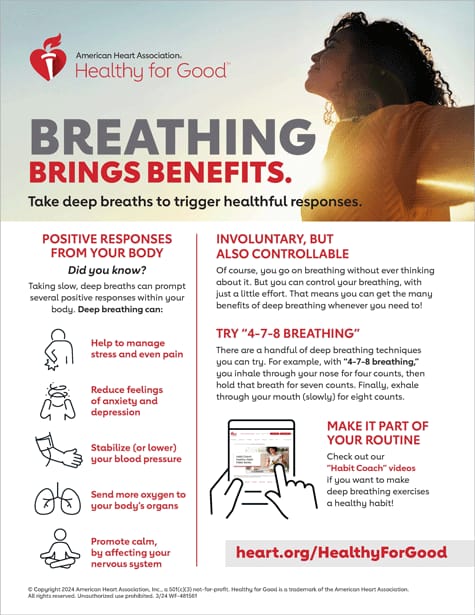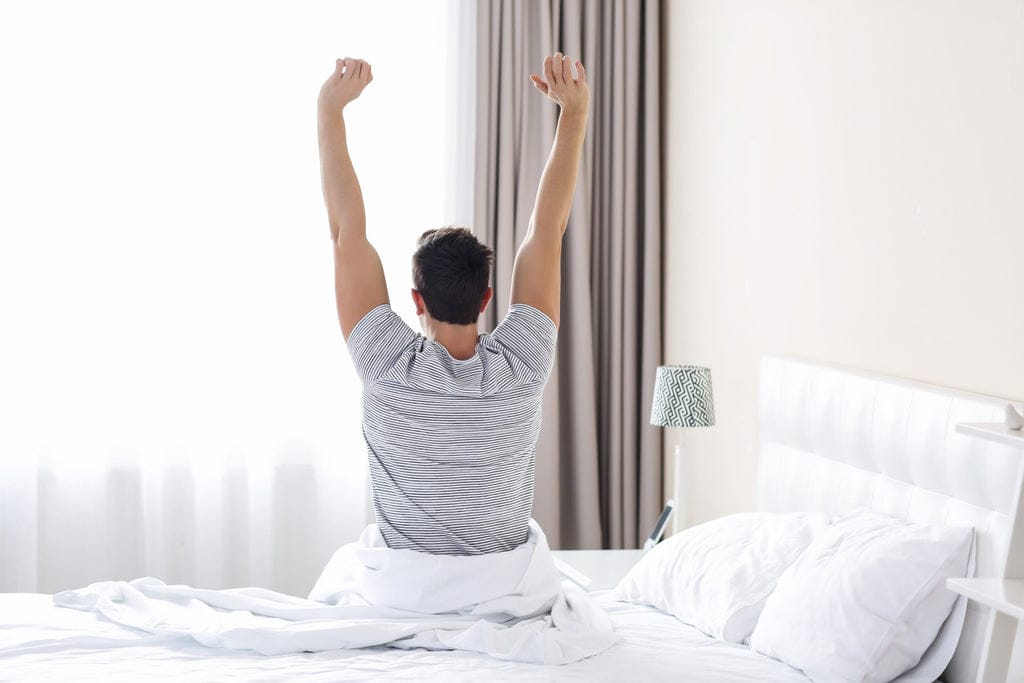The Lesson We Never Learned
Picture this: a student sitting in an exam hall, palms sweaty, heart pounding, brain frozen—not because they don’t know the answers, but because they can’t think straight. Or an adult about to give a presentation who suddenly forgets their entire opening line.
These scenarios are not rare—they’re symptoms of stress hijacking our ability to think clearly, a reality most of us never learned to manage in school.
While traditional education emphasizes academic skills like algebra, grammar, and history, it rarely teaches students how to regulate their minds and bodies under pressure. According to the World Health Organization, stress, anxiety, and depression are becoming increasingly common among young people—and the education system is ill-equipped to respond.
What’s missing from the curriculum is a basic understanding of how the breath can serve as a powerful tool for self-regulation. Research from Harvard Medical School shows that controlled breathing can activate the body’s relaxation response, reducing anxiety and sharpening mental clarity.
The Missing Curriculum: Mental Fitness in Schools
According to a report by UNICEF, millions of children and adolescents worldwide suffer from mental health issues, many of which are directly linked to academic stress. And while schools often promote physical fitness through sports and exercise, mental fitness is still overlooked, despite its direct impact on academic success and lifelong well-being.
In fact, the American Psychological Association notes that mindfulness and breath-based techniques help lower anxiety and improve cognitive control. Yet, such practices are rarely integrated into mainstream education.
Contrast that with high-pressure environments like the military or elite sports, where breath control is taught as a performance enhancer. For example, the U.S. Navy SEALs are trained in “box breathing” to maintain composure under life-threatening stress, as noted in this Forbes article. Why are we reserving these life-changing skills only for the elite?
As stress and burnout increase in both schools and workplaces, it’s clear we need to rethink what education really means. Teaching students how to breathe with awareness may be as essential as teaching them how to read—because when the mind is overwhelmed, no amount of knowledge can be accessed effectively.
The Science Behind Breathing and the Brain
Breathing is one of the few bodily functions that operates both automatically and under conscious control—and this unique duality gives it incredible power over how we think and feel. When we become aware of our breath and control it deliberately, we can regulate the very systems that govern stress, focus, and mental clarity.
A study published by the National Institutes of Health confirms that breathing patterns can significantly influence heart rate variability, which is a key indicator of nervous system balance.
Moreover, breathing impacts the oxygen supply to the brain, which is essential for clear thinking and quick decision-making. The brain consumes roughly 20% of the body’s oxygen, and inefficient breathing can starve it of the fuel it needs.
A report from Harvard Health Publishing emphasizes that conscious breathing not only reduces anxiety but also enhances cognitive performance by ensuring optimal oxygen flow. Interestingly, neuroscientists have also discovered that breathwork can alter brainwave activity.
Slow, rhythmic breathing encourages alpha brainwaves, which are associated with relaxed alertness and creativity. A 2017 study from Stanford University found that a specific cluster of neurons in the brainstem, called the pre-Bötzinger complex, links breath control to states of emotional and cognitive stability.
Practices like alternate nostril breathing, rooted in ancient yogic science, are now being validated by modern research, such as findings highlighted in Frontiers in Human Neuroscience, which link these techniques to improved attention and emotional control.
Fast Thinking Through Breath Control
We often associate faster thinking with intelligence or multitasking skills—but in reality, our ability to think quickly and clearly is closely tied to how well we manage our internal state, especially under pressure. And one of the fastest, most effective ways to optimize that state is through controlled breathing.
However, by using specific breathing techniques, you can instantly trigger the parasympathetic nervous system, allowing your brain to move from reactivity to clarity. As Harvard Business Review explains, proper breathing can shift your brain from a reactive state into a more resourceful, solution-oriented mode.
This technique is widely used by Navy SEALs to maintain composure in combat situations and by professionals in high-stakes industries to enhance focus. According to Cleveland Clinic, this method increases oxygen to the brain and improves concentration within minutes.
This connection is well documented in studies like those found in Frontiers in Psychology, which show that deep, controlled breathing enhances executive function and attention span.

This infographic from mindfulwholeness.org outlines various breathing techniques like belly breathing and back breathing that help kids and teens stay calm, focused, and physically aligned. Backed by expert recommendations, these methods are simple yet powerful tools to manage anxiety and build resilience.
Professionals in high-performance environments, from surgeons to elite athletes, regularly use breath control to get “in the zone.”
For instance, Olympic swimmer Michael Phelps has spoken openly about his breathing routines before races to sharpen focus and calm nerves. Similarly, tech CEOs like Marc Benioff of Salesforce incorporate breath-based mindfulness practices to maintain clarity during high-stakes decisions, as noted in CNBC.
Staying Calm: The Breath as Your Anchor
When stress takes over, our bodies enter a fight-or-flight state—muscles tense, heart rate spikes, and our thoughts become scattered. But through conscious breathing, we can engage the parasympathetic nervous system, which helps restore balance to the body and mind.
According to the Cleveland Clinic, diaphragmatic (or belly) breathing is especially effective in slowing the heart rate, reducing blood pressure, and promoting a sense of emotional ease.
One method, 4-7-8 breathing, popularized by Dr. Andrew Weil and supported by University of Arizona research, involves inhaling for 4 seconds, holding for 7 seconds, and exhaling for 8 seconds. This pattern slows down the nervous system and allows the body to exit its stress state quickly.
Calmness isn’t just a feeling—it’s a physiological state that improves memory, attention, and emotional control. A study published in the Journal of Clinical Psychology found that patients who practiced slow breathing for just five minutes a day experienced a measurable drop in anxiety levels and improvements in mood over time.
Programs like MindUP and Inner Explorer bring daily mindfulness and breathing exercises to thousands of schools globally, showing marked improvements in student focus, emotional regulation, and even test scores.
In the workplace, companies like Google, Intel, and General Mills have introduced breath-based mindfulness sessions as part of their employee wellness initiatives. A Harvard Business Review report highlights that consistent mindfulness and breathing practices can physically reshape brain regions related to stress response and emotional regulation.
Practical Techniques: Breathing Exercises You Can Start Today
The beauty of breathwork is that it doesn’t require any special equipment, environment, or prior experience. It’s free, portable, and always accessible—whether you’re sitting at your desk, standing in a crowded elevator, or lying awake at night.
Here are some science-backed breathing techniques you can try immediately:
Box Breathing
Also known as four-square breathing, this technique is simple and powerful. Inhale for 4 seconds, hold your breath for 4 seconds, exhale for 4 seconds, and hold again for 4 seconds—then repeat.
As highlighted by the Cleveland Clinic, box breathing helps reduce anxiety, sharpen focus, and is widely used by military personnel and athletes to enhance performance under stress.
4-7-8 Breathing
Popularized by integrative medicine expert Dr. Andrew Weil, this method involves inhaling for 4 seconds, holding for 7, and exhaling for 8. The extended exhale activates the parasympathetic nervous system, encouraging deep relaxation.
According to Harvard Health Publishing, this pattern can be particularly helpful for easing anxiety and improving sleep quality.
Alternate Nostril Breathing (Nadi Shodhana)
This ancient yogic practice involves using your fingers to close off one nostril while inhaling through the other, then switching sides.
It may sound unusual, but studies such as one from Frontiers in Psychology show that this technique improves cognitive performance, reduces stress, and balances activity between the brain’s hemispheres, helping you feel more centered.
Resonant or Coherent Breathing
This method involves breathing at a rate of about 5 to 6 breaths per minute (roughly inhaling and exhaling for 5 seconds each). As detailed in research from the Journal of Alternative and Complementary Medicine, this slow, rhythmic breathing pattern can enhance heart rate variability, balance the nervous system, and create a sense of overall emotional equilibrium.
Simple Awareness Breathing
Just noticing the breath can reduce stress levels, as supported by findings in a study on mindfulness and breath awareness, which showed that regular breath observation helps train attention and emotional regulation.
The key to integrating these practices into your life is consistency over intensity. Just five minutes a day can create noticeable shifts in your stress levels, mood, and cognitive clarity. You can use apps like Headspace, Insight Timer, or Calm to guide you, or simply set a timer and start with your favorite technique.
Remember, these aren’t just relaxation hacks—they’re tools to help you reclaim control over your physiology and mental state. With time and practice, you’ll notice that your default reaction to stress becomes less panic and more poise.
Breathing – The Missing Piece in Education
Despite being one of the most powerful tools for mental performance, emotional regulation, and physical health, breathwork remains largely absent from traditional education systems. We are taught math, language, and science, but rarely are we shown how to manage our own minds and emotions—yet that skill is foundational to success in any area of life.
As neuroscientist Dr. Andrew Huberman explains in the Huberman Lab podcast, controlling your breath gives you access to parts of the brain that are otherwise difficult to influence—like the amygdala, which governs fear and anxiety.
Programs such as MindUP and Inner Explorer are pioneering efforts to bring breath-based mindfulness practices into schools, teaching children not just how to learn, but how to focus, calm themselves, and build resilience.

This image by the American Heart Association highlights the science-backed benefits of deep breathing, such as reduced anxiety, lower blood pressure, and improved focus. It also introduces the popular “4-7-8 breathing” method and encourages making mindful breathing a daily habit.
The benefits don’t stop in childhood. Adults in high-stakes careers—from surgeons to CEOs—are turning to breathwork as a tool for maintaining performance under pressure. Even Silicon Valley companies like Google and Salesforce are investing in mindfulness and breathwork training to improve employee focus and emotional intelligence.
If schools, parents, and communities begin to recognize the value of teaching breathwork early on, we could cultivate generations that are not only smarter and more focused but also calmer, kinder, and more resilient.
As author James Nestor says in his book “Breath: The New Science of a Lost Art”, “The missing pillar in health is breath.” It’s time we brought that pillar back into the foundation of education—and life.
Frequently Asked Questions (FAQs) About Using Breath to Think Faster and Stay Calm
What is the connection between breathing and mental clarity?
Breathing affects oxygen supply to the brain and activates the nervous system, influencing focus, clarity, and calmness.
How does controlled breathing help reduce stress?
Controlled breathing activates the parasympathetic nervous system, which helps lower heart rate and blood pressure, reducing stress levels.
Can breathing techniques improve cognitive performance?
Yes, studies show that specific breathing exercises enhance attention, memory, and executive functions by calming the nervous system.
What is box breathing and how does it work?
Box breathing involves inhaling, holding, exhaling, and pausing for equal counts (usually 4 seconds each), helping regulate the nervous system and improve focus.
Are there quick breathing exercises I can do anywhere?
Yes, techniques like 4-7-8 breathing or simple awareness breathing can be done anytime and anywhere for immediate calm.
Why don’t schools teach breath control techniques?
Traditionally, education focuses on academic subjects and overlooks mental and emotional regulation skills like breathwork.
Can breathwork help with anxiety and panic attacks?
Yes, breath control can calm hyperventilation and help manage the physical symptoms of anxiety and panic.
How long does it take to see benefits from breathing exercises?
Many people notice immediate effects, but consistent practice over weeks improves long-term mental and emotional health.
Is breath control linked to mindfulness?
Breath awareness is a core component of mindfulness practices and helps train attention and emotional regulation.
Can breathing techniques improve sleep quality?
Yes, slow and deep breathing activates relaxation responses, making it easier to fall asleep and stay asleep.
What is alternate nostril breathing?
An ancient yogic practice involving breathing through one nostril at a time, which balances brain hemisphere activity and reduces stress.
Do breathing exercises require special training?
Most techniques are simple to learn and can be practiced independently, though guided sessions or apps can be helpful for beginners.
How does breath control affect the nervous system?
Breath control helps shift balance from the sympathetic (“fight or flight”) to the parasympathetic (“rest and digest”) nervous system.
Can athletes and professionals benefit from breathwork?
Yes, many athletes, surgeons, and executives use breath control to enhance focus and manage stress during high-pressure situations.
Is there scientific research supporting breathwork benefits?
Numerous studies from institutions like Harvard, Cleveland Clinic, and Frontiers in Psychology support breathwork’s positive effects.
Can children learn breath control techniques?
Yes, schools implementing mindfulness programs often teach children simple breathing exercises to improve focus and emotional control.
How often should I practice breathing exercises?
Practicing daily for even 5 minutes can provide significant benefits; consistency is more important than duration.
Are there risks associated with breathwork?
Breathing exercises are generally safe, but people with respiratory or heart conditions should consult a healthcare provider before starting.
Can breathing help during public speaking or social anxiety?
Yes, controlled breathing helps calm nerves and improves clarity of thought during stressful social interactions.
What apps or resources can guide me in breathwork?
Apps like Headspace, Calm, and Insight Timer offer guided breathing and mindfulness exercises for beginners and advanced users alike.
“Breath is not just for survival—it’s for mastery. Mastery of stress. Mastery of attention. Mastery of self.”
– Authored by Mridu Mishra





